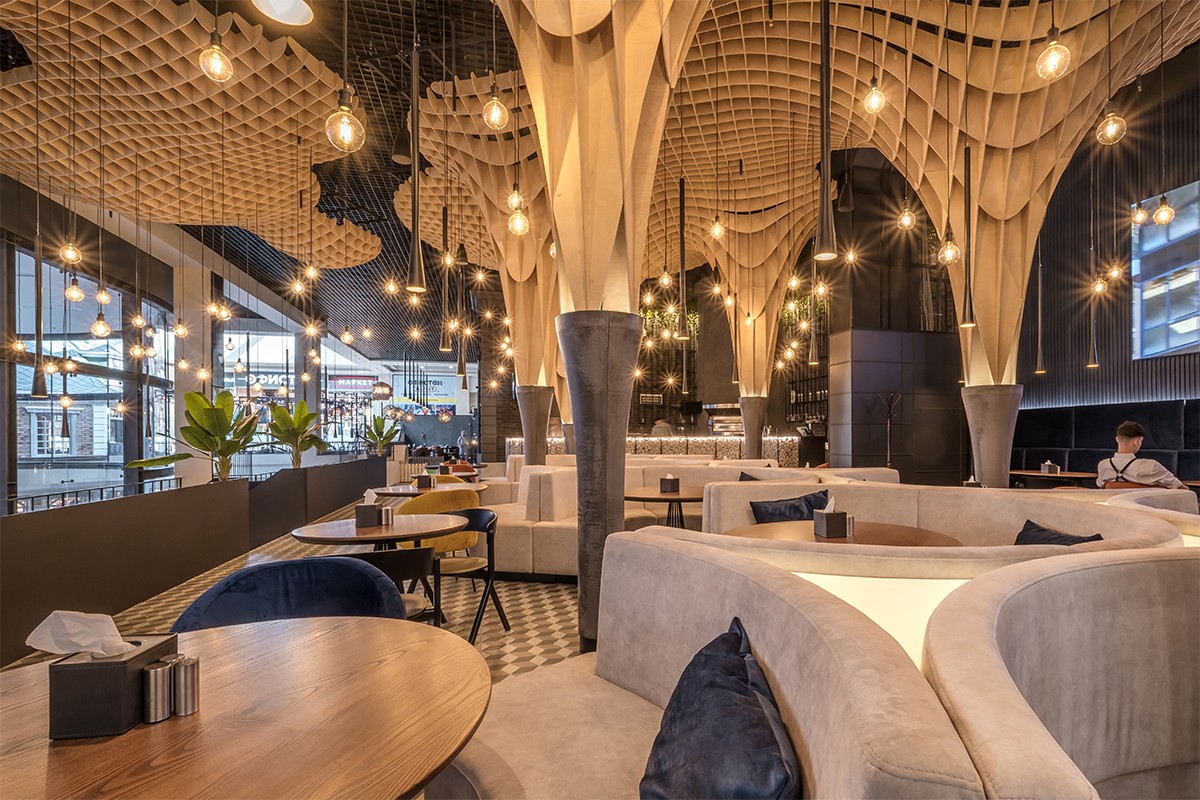Asian Restaurant ISB: A Must-Try Area for Food Lovers in Islamabad
Asian Restaurant ISB: A Must-Try Area for Food Lovers in Islamabad
Blog Article
Savor Genuine Asian Cuisine With a Pan-Asian Spin for a Cooking Experience
Getting started on a cooking journey through genuine Asian food, improved with a Pan-Asian spin, supplies an unique opportunity to discover the abundant tapestry of tastes that define the region's diverse cooking practices. As you contemplate these enticing dishes, consider the cultural narratives and historical influences that shape them, each bite providing a story waiting to be uncovered. pan asian restaurant Islamabad.

Exploring Pan-Asian Tastes
In the world of worldwide gastronomy, Pan-Asian food attracts attention for its amazing diversity and the harmonious interaction of flavors from different Asian cultures. This cooking method celebrates the unique ingredients and abundant traditions located throughout the continent, creating a tapestry of tastes that is both appealing and satisfying. Secret to Pan-Asian cuisine is its capability to balance different flavors-- pleasant, salty, spicy, and sour-- while highlighting the quality and top quality of each component.
From the umami-rich soy sauce of Japan to the fiery chili peppers of Thailand, Pan-Asian food offers a comprehensive combination of tastes. These elements are commonly incorporated in innovative means, enhancing recipes with layers of intricacy. For circumstances, making use of aromatic herbs such as lemongrass and cilantro, common in Vietnamese and Thai cuisine, adds a revitalizing illumination to meals, while the incorporation of coconut milk supplies a creamy, rich structure.
The focus on fresh fruit and vegetables and aromatic seasonings guarantees that each dish is not just a banquet for the palate however likewise for the detects. Pan-Asian food welcomes restaurants to start a cooking journey, checking out the substantial and varied landscapes of Eastern gastronomy with every bite.
Blend Recipes to Attempt
While Pan-Asian cuisine is celebrated for its typical tastes, the contemporary culinary landscape is progressively welcoming combination dishes that blend these classic components with impacts from other regions. This cutting-edge strategy not only honors the rich heritage of Asian cooking arts yet additionally presents unique taste experiences that interest contemporary tastes.
An archetype of such a combination dish is the Korean-Mexican taco, where marinaded bulgogi beef is wrapped in a cozy tortilla, topped with kimchi and a spicy gochujang-infused salsa. This mix marries the bold, tasty tastes of Korea with the lively, fresh elements of Mexican food. In a similar way, sushi burritos have obtained popularity, amalgamating the fragile artistry of Japanese sushi with the passionate, hand-held convenience of a burrito, commonly featuring blend ingredients like tempura shrimp and avocado with a drizzle of wasabi mayo.
An additional noteworthy meal is Thai curry ramen, which infuses the velvety, fragrant spices of Thai curry into the comforting broth of standard Japanese ramen, developing an unified mix that entices the senses. These combination meals extend beyond plain uniqueness; they stand for a cooking discussion in between societies, encouraging exploration and innovation in the world of Pan-Asian food.
Important Components and Spices
To truly appreciate Pan-Asian food, one need to recognize the important components and flavors that develop its structure. This varied cooking design draws from a rich tapestry of Oriental customs, using an unified blend of structures and flavors.
Fragrant elements are critical, with lemongrass, garlic, and ginger being common across different Pan-Asian recipes. These components offer a fragrant base that enhances the complexity of tastes. Flavors such as star anise, cardamom, and cinnamon introduce warmth and personality, echoing impacts from areas like China and India.

Food Preparation Strategies and Tips
Understanding the art of Pan-Asian cuisine needs knowledge with its distinctive cooking techniques, each contributing to the dynamic tapestry of tastes this cooking custom is commemorated for. Central to these approaches is the stir-fry, a rapid food preparation strategy that preserves the nutritional stability and vivid shades of ingredients. Using a frying pan, the stir-fry approach enables also heat distribution, important for accomplishing the particular texture and flavor balance of Pan-Asian meals.
An additional fundamental method is steaming, specifically widespread in Chinese food. This gentle technique preserves the all-natural tastes and nutrients of active ingredients, making it optimal for fish and shellfish and veggies. Dumplings, a precious staple, typically gain from steaming, resulting in soft, succulent textures.
Grilling, likewise important, presents great smoky midsts to dishes such as Oriental bulgogi or Japanese yakitori (asian restaurant isb). This method typically includes marinating components, enabling flavors to penetrate deeply prior to cooking over an open fire or warm plate
Last but not least, mastering the art of balancing tastes-- wonderful, sour, salty, bitter, and umami-- is critical. Correctly layering these components can raise a recipe from regular to phenomenal, offering a complicated and pleasing culinary experience that personifies the essence of Pan-Asian food.
Dining Experiences Worldwide
Across the world, Pan-Asian food supplies an unparalleled eating click this experience, celebrated for its abundant tapestry of flavors and vivid presentations. This cooking sensation has transcended social boundaries, catching the hearts and tastes of food enthusiasts worldwide. In multicultural cities like New York, London, and Sydney, Pan-Asian restaurants act as melting pots where culinary traditions from Thailand, Japan, China, and beyond merge, offering restaurants with an eclectic mix of recipes that highlight the region's diversity.
The worldwide appeal of Pan-Asian food hinges on its capacity to supply both credibility and innovation. Chefs skillfully marry traditional ingredients such as lemongrass, soy sauce, and miso with contemporary techniques, resulting in recipes that are both acquainted and refreshingly brand-new. This combination enables restaurants to start a culinary trip that values heritage while visit this site embracing modernity.
Furthermore, dining experiences are boosted through thoughtfully created environments that show the ethos of Pan-Asian looks. From minimal Japanese-inspired insides to vivid Thai-themed rooms, each dining establishment uses an one-of-a-kind atmosphere that matches the culinary offerings. Because of this, customers are not just consuming a dish however partaking in a cultural experience, making Pan-Asian eating a truly international sensation.
Verdict
The exploration of Pan-Asian cuisine provides an extensive understanding of the elaborate interaction of tastes and cooking customs throughout Asia. By embracing fusion meals such as Thai curry ramen and sushi burritos, the culinary trip not just highlights the flexibility of traditional ingredients but additionally showcases cutting-edge modern-day techniques. This gastronomic adventure, enriched by crucial spices and cooking techniques, offers a distinct opportunity to appreciate the multiculturalism and cooking creativity that define Pan-Asian food on an international scale.
Embarking on a culinary journey through genuine Eastern food, enhanced with a Pan-Asian twist, supplies an one-of-a-kind chance to check out the abundant tapestry of tastes that specify the region's diverse culinary customs.In the world of global gastronomy, Pan-Asian food stands out for its remarkable diversity and the harmonious interplay of tastes from different Eastern cultures. Key to Pan-Asian cuisine is its capacity to stabilize different flavors-- sweet, salty, spicy, and sour-- while highlighting the freshness and quality of each component.

Report this page